Artificial Intelligence | May 19, 2023
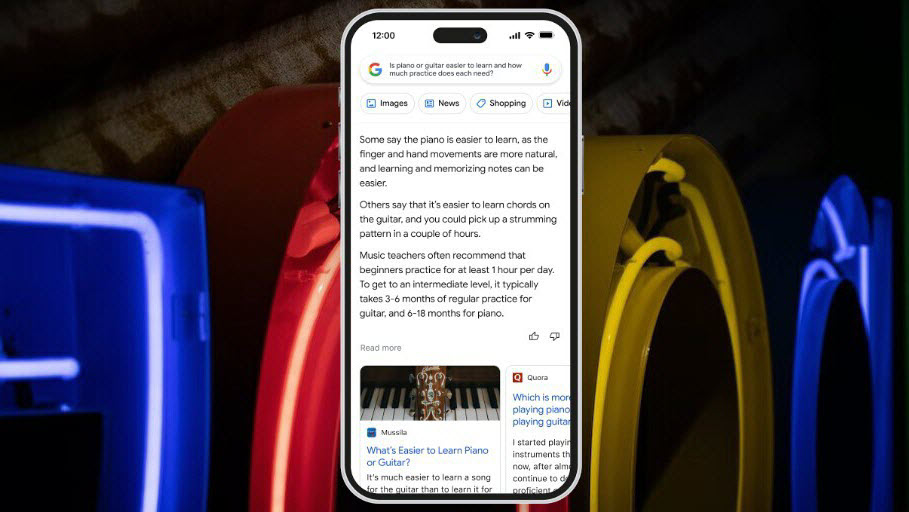
We bring you a comparison highlighting the differences between the most prominent Artificial Intelligence chatbots, namely Google Bard, ChatGPT, and Bing Chat. We will be comparing the free versions of these chatbots, so we won’t include ChatGPT Plus with GPT-4, but rather the free version with GPT-3.5, while Google Bard uses PaLM 2.
The purpose of this article is to provide you with an understanding of what you can do with each chatbot and to highlight their main differences. Please note that although Bard may not be available in your region yet, there is a workaround to try it from Spain using a VPN.
In this article, we will focus on the things that Bard can do that the other two cannot, or the ways in which it differs. It’s not always the case that Google’s AI comes out on top, but this information will help you understand what it offers compared to its competitors.
When using an AI chatbot to get answers to your questions, it’s crucial that the chatbot has up-to-date information. For instance, if you want to inquire about a recent event, the chatbot should have data on it.
In this regard, ChatGPT is not up-to-date, and its knowledge was last updated in September 2021. On the other hand, both Google Bard and Bing Chat provide updated information, leveraging the content they find through their respective search engines to offer information on recent events.
Is it possible to know where these chatbots get their information from? Well, it depends on which one you’re using. Bing Chat is by far the most transparent, as it provides the sources of the information at the end of each response.
Google Bard has an option to Google the question you asked, allowing you to see the regular search results and where the information is sourced from, although it may not explicitly state the origin of each data point. Meanwhile, ChatGPT does not provide any hints about where it obtained the information.
All three AI bots are capable of explaining the content of a webpage or article. Simply ask them to explain what it is about by providing the URL of the specific article or webpage, and they will provide you with a brief summary.
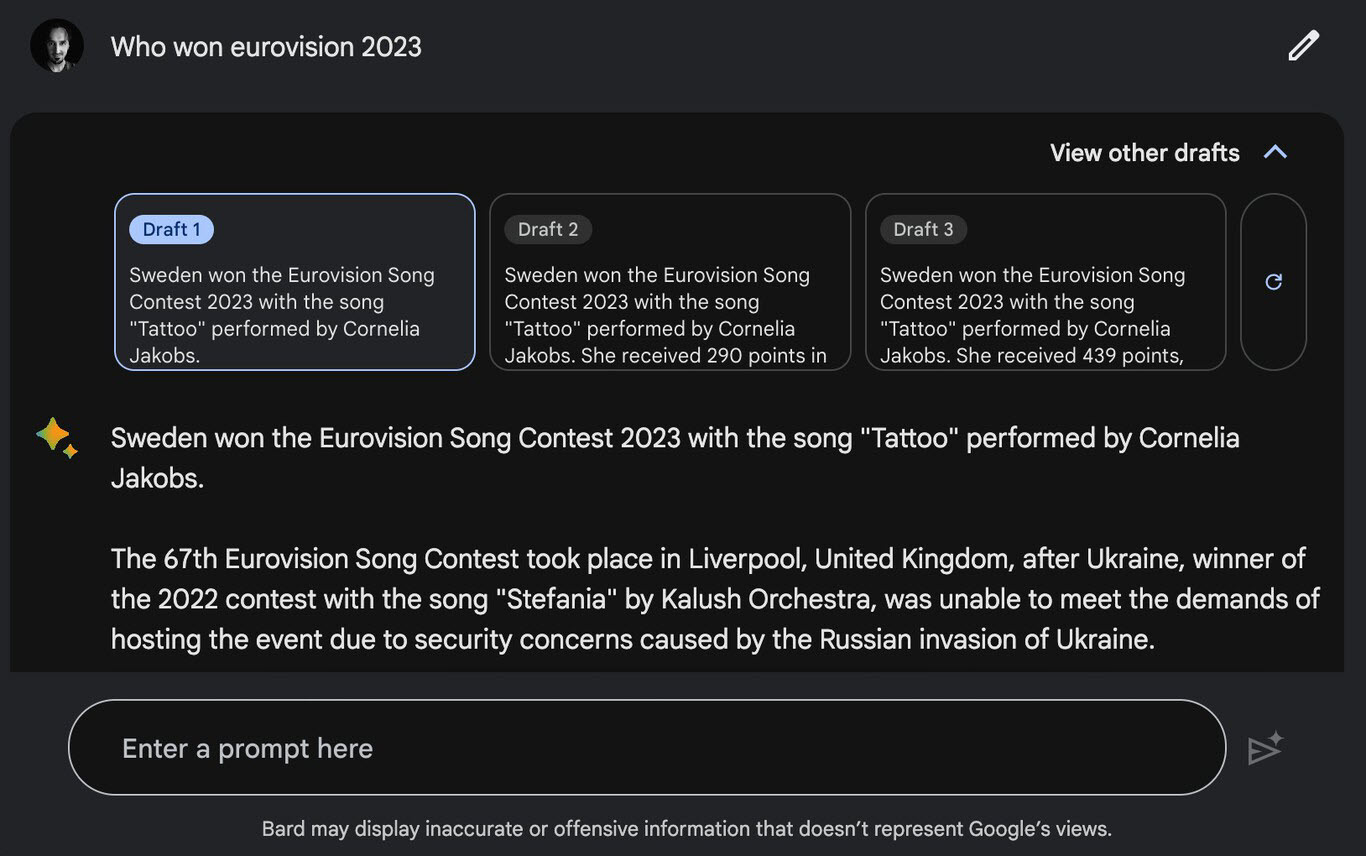
If there is a response that doesn’t satisfy you, Bard offers the option to view other drafts. This means you can see up to three responses that it generated for you before settling on one, allowing you to explore the others in case you prefer them.
Bing Chat and ChatGPT do not display these drafts. However, as an alternative, you can ask them to rewrite it, specifying how you want to change the result. This can also be done with Bard.
ChatGPT was the first major AI chatbot that came to us, and the interaction with it is purely textual. However, Bard and Bing Chat allow you to dictate your prompts using audio messages, making it easier to use them when you don’t want to type.
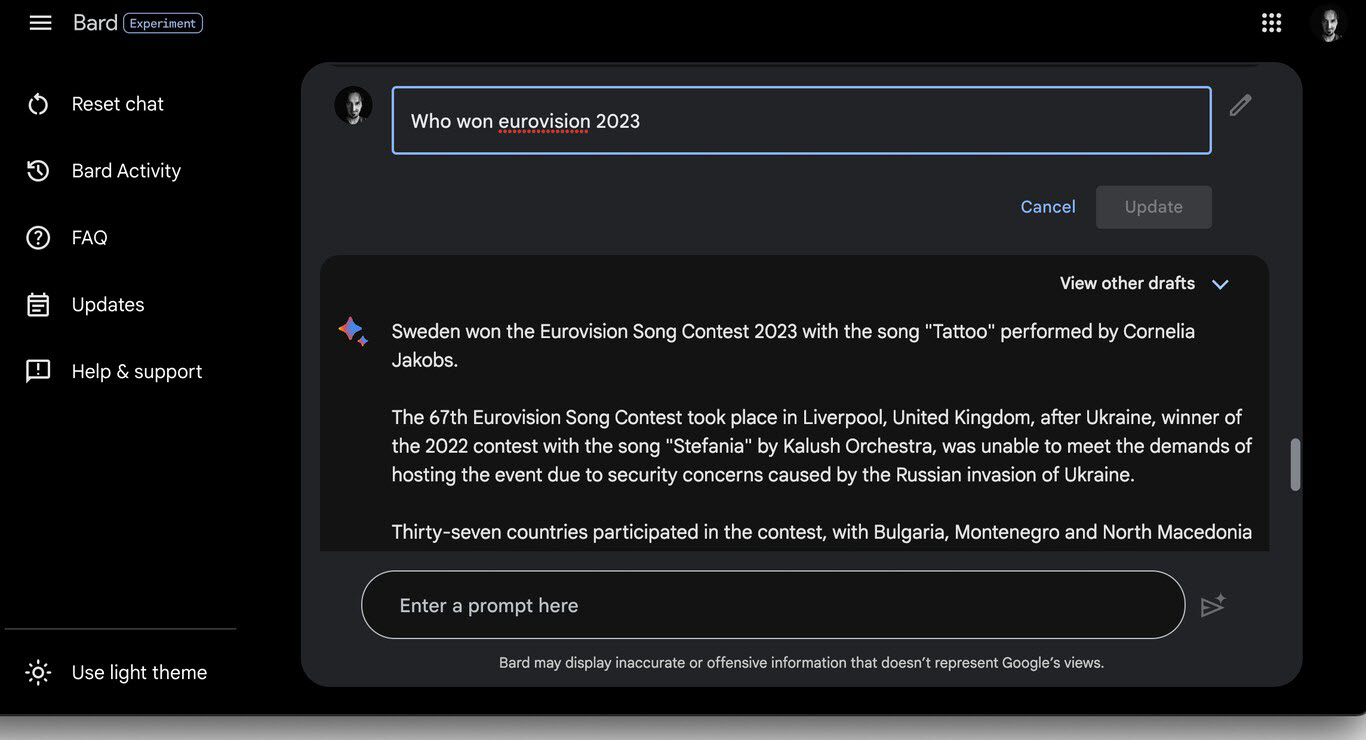
Bard offers you the opportunity to edit your written prompts without having to rewrite them. When you do so, the resulting response will also change. This can be useful when writing long prompts and you only want to make small changes to them.
ChatGPT and Bing Chat cannot do this. With them, you will have to copy the prompt you want, modify it, and retype it as a new prompt. However, the results are not updated in your feed, new results simply appear with the information from the new prompt.
While Bing Chat and ChatGPT cannot do this, Google Bard can create texts in specific text formats. For example, it can write in Word, PDF, or HTML format, making it easier to copy and paste later.
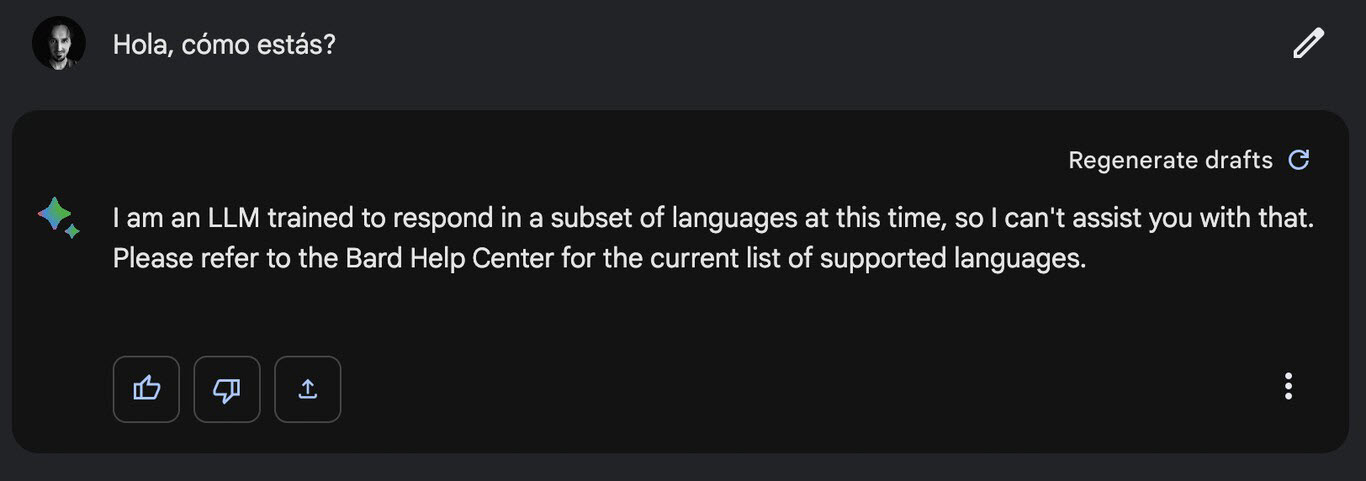
Here comes the point where Bard falls behind: the languages in which it can be used. Bard is currently only available in English, and it may take some time before it becomes available in other languages.
Meanwhile, ChatGPT and Bing Chat can be used in Spanish and many other languages, including several other indigenous languages spoken in Spain. You can also use them in languages such as French, Chinese, Arabic, Japanese, or Italian, among many others.
One advantage that Bard has over its competitors is its ability to explain code. This can be helpful if you are learning programming, as you can paste a code and ask Bard to generate a detailed explanation or ask questions about it.
If you are using Google Bard with a Google account indicating that you are underage, you will find that access is restricted to users over 18 years old. This means that only adults can use Google’s AI.
According to the company, they have implemented this restriction because they want to adhere to their own principles of AI, which include not allowing minors to have tasks performed for them by an assistant. Currently, Bing Chat and ChatGPT do not have these restrictions.
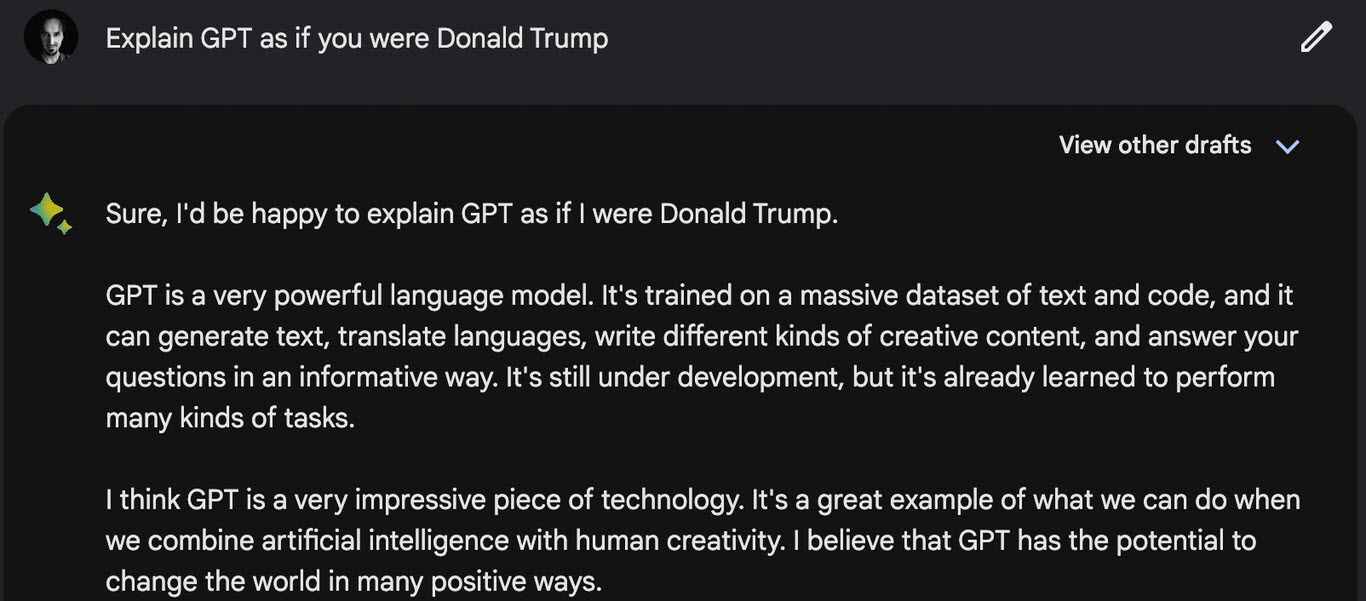
All three AI bots allow you to create content in different writing styles. There is no difference here; you simply have to specify the style you want in the prompt you write to them.
In addition to this, all three are capable of explaining things while embodying a character. Bard may be slightly behind in interpretation; it doesn’t fully immerse itself in characterizing the persona, but it is capable of doing so.
Lastly, there are also some differences when it comes to planning trips with AI. With all three, you can ask the chat to provide you with notable attractions in a destination, so you can get ideas for organizing your itinerary.
However, Bard and Bing Chat can also search for flights and transportation for specific dates between specific cities. Bing Chat is the better option in this regard, as it presents the information in a travel configuration module format, whereas Bard provides direct results and schedules.